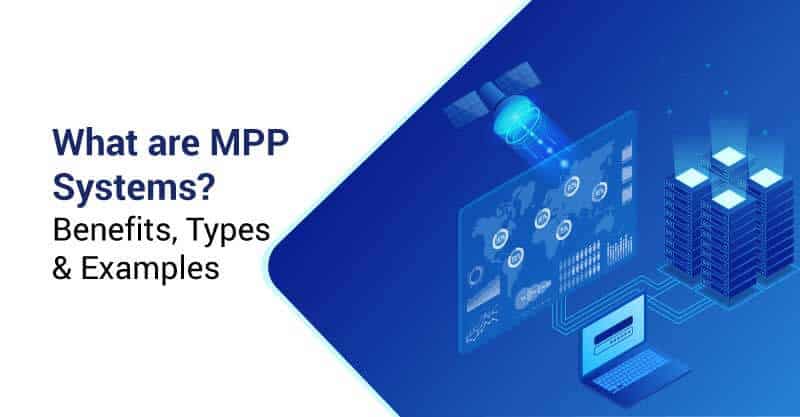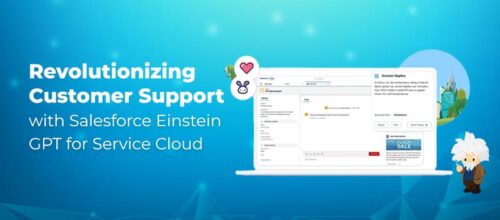What are MPP Systems? Benefits, Types and Examples

Written by Imran Abdul Rauf
Content Writer
April 17, 2022
The amount of data gathered, stored, and used reached a staggering more than 64 zettabytes in 2020. And by the end of 2021, industry experts predicted the figure to grow by 12.5%, i.e., reach 72 zettabytes. Companies collect massive amounts of data for business decisions and consumer operations. That’s why massively parallel processing (MPP) systems cater to the demand for ever-growing storage capacity and computing capability to process big data.
What is Massively Parallel Processing (MPP)?
MPP is the collaborative processing of a program using two or more processors, and using different processors allows the system to perform at higher speeds. Computers running the processing nodes are independent and don’t share a memory. Instead, each processor covers a different part of the data program with its operating system.
Organizations often employ a messaging interface that enables MPP systems to serve thread handling. The process facilitates quick analytics for business intelligence and bulks of data volume. The MPP architecture permits processors to communicate and share relevant information. Large datasets in data warehouses associate independent processing nodes together.
What is an MPP Database?
An MPP database is a data warehouse where processing activities are split between different nodes and servers. A leader node carries the communication with each individual node. The computer nodes handle the requested processes by dividing the work into smaller, manageable tasks and unit chunks.
The MPP process can scale horizontally by incorporating additional computer nodes, instead of additional servers for scaling vertically. Teams can sift and sort the data faster and respond to the queries if more processors are attached to the data warehouse and MPP databases. In doing so, this diminished the need for extended time intervals needed for complex searches on large datasets.
Data warehouse appliances, normally used to acquire in-depth insights and big data analyses, merge MPP architecture into the database to achieve a higher performance and platform scalability.
What are MPP Databases Used For?
As we stated earlier, organizations collect huge bulks of data. And using a single server without sufficient computing power to manage processing in an operating system makes the stored data expensive to handle and doesn’t produce the expected results. Although there are different approaches to handling this problem, companies often use MPP as an essential tool in their storage infrastructure.
Components that use independent nodes with their own operating systems to create an efficient model, for instance, many people in the company can run queries in a data warehouse simultaneously without incurring lengthy response times. MPP databases are also extensively used for centralizing large amounts of data in data warehouses. IT personnel and teams use the centralized data at different locations to access the same data assets.
The activities and jobs of IT teams stem down from a single source of truth and not data silos. The purpose is to ensure all entrusted parties can use the most updated data.
Departmental collaboration and usage
At times two or more company departments require alignment. For example, if the accounts and finance departments use the same data sets, finance can develop better synergy to support the accounts team.
Moreover, the finance department can do better forecasting through the pending data provided by the sales team. Similarly, operations, HR, logistics, and technical support business units benefit from a central repository and quick processing.
MPP vs. SMP
Symmetric multiprocessor (SMP) systems share memory, software, and I/O resources and usually use one CPU to manage database requests. The SMP databases can run on multiple servers and share resources in cluster configurations. The major difference between SMP and MPP is the system design. An MPP system has its dedicated resources and shares nothing, while the SMP counterpart shares the same resources.
The other key difference is the massively factor. As you can use hundreds of processors in an MPP system and each processor has its own operating system and memory, IT personnel can handle loads of data in parallel. Moreover, SMP systems are known to deliver low returns. Each processor does enable faster synchronization across the system, but it also has its own cache.
This results in cache-based and bandwidth issues that arise when multiple processors to the same operating system and resources are added. These memory and resource limitations give MPP systems an edge and more scalability capability over SMP.
Examples of MPP Systems
There are two types of MPP database architecture: grid computing and computer clustering.
Grid computing
Users can employ multiple computers across a distributed network through grid computing. One significant way grid computing benefits businesses is that resources are used when available. Grid computing reduces hardware spend and server space and restricts bandwidth usage when used for other jobs or multiple requests are processed simultaneously.
Computer clustering
Computer clustering links the nodes which have the ability the handle multiple tasks at the same time by communicating with each other. Therefore, the more nodes are associated with the MPP system, the faster the queries will be answered.
Popular MPP Systems Used by Businesses
Thoughts
Massively parallel processing systems can unlock the power of your business data and produce deeper analysis for big data activities. If you like to learn more about cloud and big data analytics services that may work in conjunction with MPP systems, talk to our data analytics experts at Royal Cyber.
Recent Blogs
- Learn to write effective test cases. Master best practices, templates, and tips to enhance software …Read More »
- In today’s fast-paced digital landscape, seamless data integration is crucial for businessRead More »
- Harness the power of AI with Salesforce Einstein GPT for Service Cloud. Unlock innovative ways …Read More »



